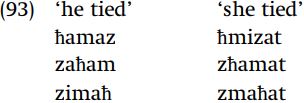

Grammar


Tenses


Present

Present Simple

Present Continuous

Present Perfect

Present Perfect Continuous


Past

Past Simple

Past Continuous

Past Perfect

Past Perfect Continuous


Future

Future Simple

Future Continuous

Future Perfect

Future Perfect Continuous


Parts Of Speech


Nouns

Countable and uncountable nouns

Verbal nouns

Singular and Plural nouns

Proper nouns

Nouns gender

Nouns definition

Concrete nouns

Abstract nouns

Common nouns

Collective nouns

Definition Of Nouns

Animate and Inanimate nouns

Nouns


Verbs

Stative and dynamic verbs

Finite and nonfinite verbs

To be verbs

Transitive and intransitive verbs

Auxiliary verbs

Modal verbs

Regular and irregular verbs

Action verbs

Verbs


Adverbs

Relative adverbs

Interrogative adverbs

Adverbs of time

Adverbs of place

Adverbs of reason

Adverbs of quantity

Adverbs of manner

Adverbs of frequency

Adverbs of affirmation

Adverbs


Adjectives

Quantitative adjective

Proper adjective

Possessive adjective

Numeral adjective

Interrogative adjective

Distributive adjective

Descriptive adjective

Demonstrative adjective


Pronouns

Subject pronoun

Relative pronoun

Reflexive pronoun

Reciprocal pronoun

Possessive pronoun

Personal pronoun

Interrogative pronoun

Indefinite pronoun

Emphatic pronoun

Distributive pronoun

Demonstrative pronoun

Pronouns


Pre Position


Preposition by function

Time preposition

Reason preposition

Possession preposition

Place preposition

Phrases preposition

Origin preposition

Measure preposition

Direction preposition

Contrast preposition

Agent preposition


Preposition by construction

Simple preposition

Phrase preposition

Double preposition

Compound preposition

prepositions


Conjunctions

Subordinating conjunction

Correlative conjunction

Coordinating conjunction

Conjunctive adverbs

conjunctions


Interjections

Express calling interjection

Phrases

Sentences


Grammar Rules

Passive and Active

Preference

Requests and offers

wishes

Be used to

Some and any

Could have done

Describing people

Giving advices

Possession

Comparative and superlative

Giving Reason

Making Suggestions

Apologizing

Forming questions

Since and for

Directions

Obligation

Adverbials

invitation

Articles

Imaginary condition

Zero conditional

First conditional

Second conditional

Third conditional

Reported speech

Demonstratives

Determiners


Linguistics

Phonetics

Phonology

Linguistics fields

Syntax

Morphology

Semantics

pragmatics

History

Writing

Grammar

Phonetics and Phonology

Semiotics


Reading Comprehension

Elementary

Intermediate

Advanced


Teaching Methods

Teaching Strategies

Assessment
Language game evidence
المؤلف:
David Odden
المصدر:
Introducing Phonology
الجزء والصفحة:
277-8
12-4-2022
1324
Language game evidence
There is a language game used by speakers of Arabic which provides independent evidence for the mental reality of these rules and underlying representations. The rule for the language game is very simple: permute the order of consonants within the root. Now let us consider the various phonetic results of permutation on the verb forms ħazam ‘he tied’ and ħzim-at ‘she tied.’ In ħazam, the first vowel does not dissimilate because of the preceding guttural; in ħzimat the second stem vowel dissimilates because it is neither preceded nor followed by a gutural, and it is not followed by a coronal sonorant.

In the permuted forms ħamaz and ħmizat, where the second and third consonants have exchanged place, the vocalic pattern remains the same because the transposition has not crucially changed the consonantal environment.
Now consider the forms zimaħ ~ zmaħat. This pattern of transposition has two effects on the vowel pattern. First, because the first consonant is now not a guttural, the dissimilation rule can apply in the first syllable, demonstrating the reality of the dissimilation rule. Second, because the final consonant is now a guttural, the dissimilation rule cannot apply in the second syllable, demonstrating the reality of the blocking condition on dissimilation. Finally, in the case of zaħam ~ zħamat, because the medial consonant is a guttural, neither vowel can dissimilate.
A crucial example, in terms of testing the validity of the proposed /CaCaC/ underlying form for surface [CiCaC] stems, is a stem such as /dafaʕ/ ‘push,’ which surfaces as [difaʕ]. Such a supposed underlying representation is abstract, since the vowel of the first syllable always surfaces as [i] or Ø, cf. difaʕ ‘he pushed,’ dfaʕat ‘she pushed,’ never as a. This stem contains a final pharyngeal consonant, and therefore movement of that consonant to first or second position will put the first vowel in contact with a pharyngeal. This should then block dissimilation, and will directly reveal the hypothesized underlying vowel to be [a].

The fact that this vowel actually surfaces as [a] under the circumstances predicted by the abstract hypothesis gives strong support to the claim for an abstract representation of such stems as having the vowel pattern /CaCaC/.
 الاكثر قراءة في Phonology
الاكثر قراءة في Phonology
 اخر الاخبار
اخر الاخبار
اخبار العتبة العباسية المقدسة

الآخبار الصحية















 قسم الشؤون الفكرية يصدر كتاباً يوثق تاريخ السدانة في العتبة العباسية المقدسة
قسم الشؤون الفكرية يصدر كتاباً يوثق تاريخ السدانة في العتبة العباسية المقدسة "المهمة".. إصدار قصصي يوثّق القصص الفائزة في مسابقة فتوى الدفاع المقدسة للقصة القصيرة
"المهمة".. إصدار قصصي يوثّق القصص الفائزة في مسابقة فتوى الدفاع المقدسة للقصة القصيرة (نوافذ).. إصدار أدبي يوثق القصص الفائزة في مسابقة الإمام العسكري (عليه السلام)
(نوافذ).. إصدار أدبي يوثق القصص الفائزة في مسابقة الإمام العسكري (عليه السلام)


















